
2-year degrees that go on to the most meaningful jobs
2-year degrees that go on to the most meaningful jobs
A third of a lifetime is spent working, making a meaningful career a critical life decision. Having a consequential career is not about monetary gain for many hard-working Americans. On the contrary, it is about making a marked difference in the world. Take, for example, teachers, who shape the minds of future generations. While the entry-level annual salary for teaching is slim compared to other careers, it doesn't stop the thousands who pursue a career in education because they find great purpose in their profession.
Studies also show that those who love their work live longer, which is a priceless consideration when choosing a profession. Balancing out working a meaningful job and making the median full-time wage (around $50,000) can be challenging, but it's possible to live the dream and make a decent living at the same time. Stacker compiled a list of two-year degrees using 2020 data from Payscale on the most meaningful employment. Jobs are ranked by degrees whose graduates report having a high meaning job, with ties broken by highest mid-career pay.
Many of the degree programs and jobs listed are in the health care field, ranging from medical secretarial science to alcohol and drug studies. While some find meaning in providing administrative support, others find daily joy in performing diagnostic tests. All of the jobs listed assist the general public in one way or another, requiring an altruistic attitude.
Money certainly plays a small role in job satisfaction, with seven of the top 10 most meaningful jobs earning mid-career pay above $60,000 per year. Helping others won out over money however, as the top job on the list saw its professionals earn less than $50,000 by the mid-point of their careers.
Continue reading to find out the two-year degrees that go on to the most meaningful jobs.

#50. Medical secretarial science
- Percent of graduates with high meaning careers: 74%
- Mid-career median pay: $42,400
- Early career median pay: $27,500
A medical secretary welcomes and processes patients into an office, making the position a key role in health care. Medical secretarial science degree graduates provide administrative support to health care professionals in all settings after being educated in medical clerical work, including managing patient files, health care terminology, processing insurance forms, inpatient and outpatient coding, managing medical databases, medical transcription, and keyboarding.

#49. Early childhood education
- Percent of graduates with high meaning careers: 75%
- Mid-career median pay: $32,800
- Early career median pay: $26,200
Working in early childhood education offers the opportunity to direct and shape toddlers' and preschoolers' lives during critical formative years. Graduates who complete this two-year degree learn to how to teach young students, including classroom management, instructional techniques, and cognitive, social, and emotional child development.

#48. Cosmetology
- Percent of graduates with high meaning careers: 75%
- Mid-career median pay: $40,300
- Early career median pay: $24,700
A cosmetologist can lift a client's self-esteem by cutting and styling hair, manicuring nails, and applying makeup. The two-year cosmetology degree entails courses in safety and sanitation, hair and nail care, aesthetics and hair removal, skin science, and salon management. After graduation, some cosmetologists become nursing home beauticians, providing seniors with a smile with some primping.

#47. Dental hygiene
- Percent of graduates with high meaning careers: 75%
- Mid-career median pay: $74,900
- Early career median pay: $66,200
Healthy teeth are directly related to good self-esteem, making dental hygiene fulfilling careers for those who want to help others. After passing the required courses, including oral biochemistry, preventative dental care, periodontal disease, and pharmacology principles, graduates must pass the National Board Dental Hygiene Examination.

#46. Dental assisting
- Percent of graduates with high meaning careers: 76%
- Mid-career median pay: $46,100
- Early career median pay: $35,700
As an important member of the dental team, assistants mostly enter the field to help patients achieve healthy smiles. Dental assistants, who can specialize in pediatric dentistry, maxillofacial surgery, orthodontics, and dentofacial orthodontics, must pass a 320-question national board exam to gain licensure in order to practice.

#45. Medical laboratory technology
- Percent of graduates with high meaning careers: 76%
- Mid-career median pay: $51,400
- Early career median pay: $38,800
Closely related to a medical laboratory technician (MLT), a graduate with a degree in medical laboratory technology studies works in a lab setting. Daily job tasks include performing diagnostic tests and recording results and data, in various departments from hospitals to veterinary labs. The specific vocation growth of up to 7% before 2029 shows many prospective students interested in attaining the two-year degree to save lives.
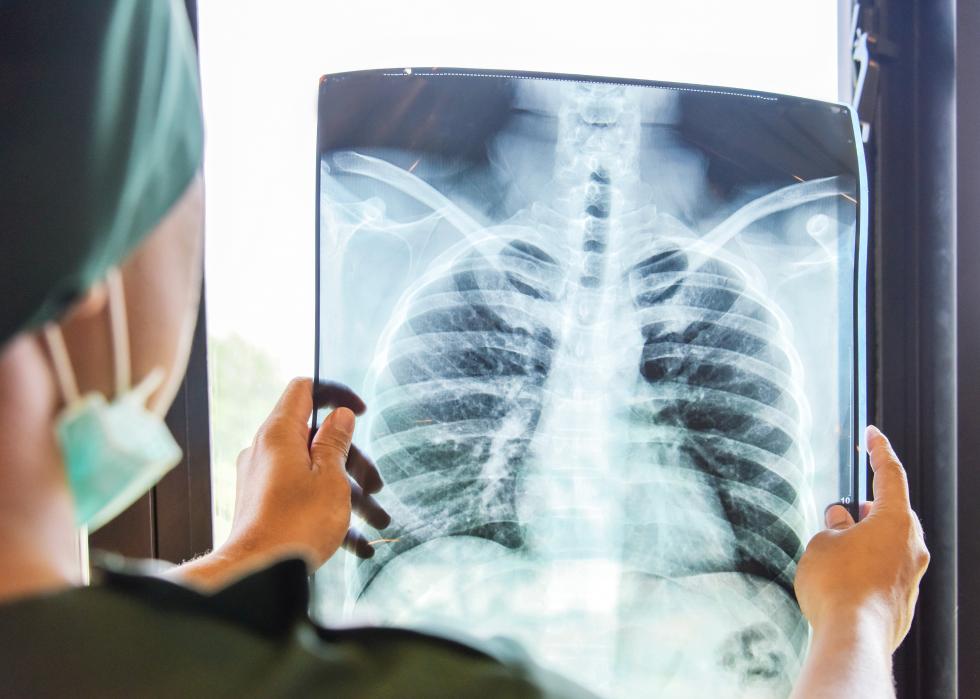
#44. Radiography
- Percent of graduates with high meaning careers: 76%
- Mid-career median pay: $63,400
- Early career median pay: $49,000
A delayed diagnosis for rare diseases can result in death, making radiography a critical role in early detection for 300 million people worldwide who suffer from unusual conditions. Medical imaging graduates, who must study anatomy, medical ethics, patient care, image evaluation, and more, perform tissue and organ scans and test blood flow to detect these and other health issues, including cancer and broken bones.
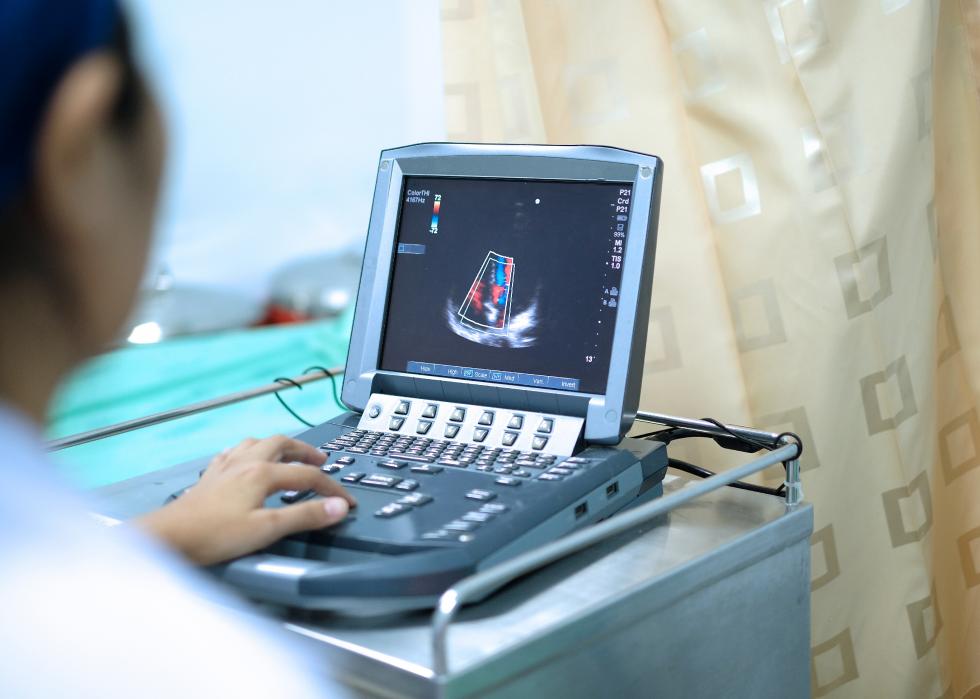
#43. Cardiac sonography
- Percent of graduates with high meaning careers: 76%
- Mid-career median pay: $72,200
- Early career median pay: $54,900
The first line of defense for heart disease is cardiac sonography, with technicians using ultrasound technology to detect abnormalities that save lives when caught early. Due to the continually-changing cutting-edge technology, cardiac sonographers, once certified, must continue their education to read intricate 3D and 4D ultrasounds. They work in hospitals, imaging centers, and doctors’ offices.

#42. Emergency medical technology (EMT)
- Percent of graduates with high meaning careers: 77%
- Mid-career median pay: $49,800
- Early career median pay: $33,500
An emergency medical technology (EMT) degree teaches graduates the medical life-support techniques to apply in urgent situations. Like paramedics, EMT technicians, who know CPR, wound treatment, and broken bone treatment, are often the first responders on a dangerous scene. To work in the field, EMTs must pass the National Registry of Emergency Medical Technicians exam and complete between 120 and 150 hours of training.

#41. Medical laboratory technician
- Percent of graduates with high meaning careers: 77%
- Mid-career median pay: $50,100
- Early career median pay: $38,300
Investigating disease and treatment is critical to humankind's health, making this specific profession highly purposeful. Graduates who successfully complete a degree in medical laboratory technology (MLT) perform disease-diagnosing tests. Practicing in the field entails seeking out microorganisms; evaluating chemical matter; and testing drug levels in hospitals, private laboratories, and pharmaceutical research and development facilities.

#40. Dental laboratory technology
- Percent of graduates with high meaning careers: 77%
- Mid-career median pay: $51,400
- Early career median pay: $32,200
Dental laboratory technology graduates work closely with dentists to design dental prostheses, which improve a patient's smile and lift self-esteem. The two-year degree, which includes classes in ceramics, dentures, implants, orthodontics, and crowns and bridges, teaches graduates how to use computer-aided design and manufacturing (CAD/CAM) technologies to fabricate dental prostheses.

#39. Paramedicine
- Percent of graduates with high meaning careers: 77%
- Mid-career median pay: $54,300
- Early career median pay: $38,400
In the highest level of emergency medical technician (EMT) studies, students in a two-year paramedicine program learn advanced emergency care, comprehensive patient assessments, cardiac life support, medication administration, and airway management and ventilation. To practice as a paramedic, a graduate of the program must become certified as an EMT and Advanced EMT.
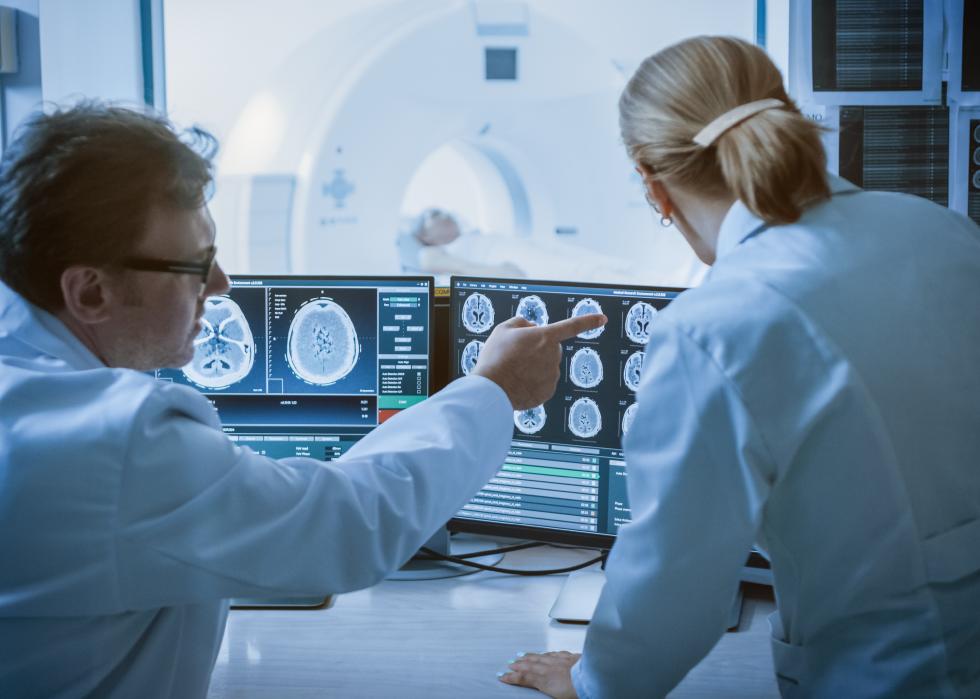
#38. Radiologic technology
- Percent of graduates with high meaning careers: 77%
- Mid-career median pay: $66,300
- Early career median pay: $48,000
Graduates with a radiologic technology degree learn how to perform magnetic resonance imaging (MRI), computed tomography (CT), and X-ray examinations. Radiologic technologists work closely with physicians, who examine the diagnostic tests they administer. The two-year degree, which requires studies in anatomy, ethical and legal responsibility, and radiation protection principles, does not require national certification, instead offering different state-to-state licensure regulations.

#37. Health & medical services administration
- Percent of graduates with high meaning careers: 78%
- Mid-career median pay: $41,300
- Early career median pay: $29,600
An associate's degree in health and medical service administration prepares graduates for entry-level positions in the industry after taking courses, including health policy and law, computer skills, and medical care management. Graduates can become medical coders, insurance billers, transcriptionists, and health office managers, all critical positions for patient care.

#36. Practical nursing
- Percent of graduates with high meaning careers: 78%
- Mid-career median pay: $47,900
- Early career median pay: $40,400
Along with providing essential care, including bathing and eating, a licensed practical nurse (LPN) also works closely with attending physicians. The two-year degree teaches graduates to take blood pressure, record vital signs, and insert catheters. Many LPN's find the job so fulfilling, they use the position as a stepping stone to becoming a registered nurse (RN).

#35. Fire technology
- Percent of graduates with high meaning careers: 78%
- Mid-career median pay: $72,700
- Early career median pay: $42,500
A degree in fire technology teaches protection and prevention. Subjects, including suppression techniques, fire behavior, and combustible materials, are required curriculum for alum, who inevitably educate the public through community outreach. Job tasks include demonstrating fire control procedures, teaching alarm-detecting operations, and performing commercial and residential inspection.

#34. Mental health
- Percent of graduates with high meaning careers: 79%
- Mid-career median pay: $38,500
- Early career median pay: $28,100
A two-year degree in mental health enables graduates to assist physicians and acts as a stepping stone for further field study. The entry-level degree certifies graduates to practice as human service or counseling assistants, marital and family therapists, or substance abuse counselors.

#33. Opticianry
- Percent of graduates with high meaning careers: 79%
- Mid-career median pay: $50,700
- Early career median pay: $37,600
An optician degree prepares graduates to assist patients with their vision. Two-year degree programs mandate specific courses including anatomy, physiology, and principles of refraction. Once certified by the American Board of Opticianry & National Contact Lens Examiners, graduates, who require scientific and clinical skills, work in retail or physician settings measuring and fitting eyewear.

#32. Funeral service education
- Percent of graduates with high meaning careers: 79%
- Mid-career median pay: $51,900
- Early career median pay: $32,200
An associate's degree in funeral service education prepares graduates to work in the field, teaching everything from embalming, to mortuary anatomy, the role of death and grief in society, and funeral service management. The 24/7 job requires compassion and professionalism at all times due to the nature of the business.

#31. Mortuary science
- Percent of graduates with high meaning careers: 79%
- Mid-career median pay: $58,400
- Early career median pay: $35,400
Funeral directors and homeowners have a degree in mortuary science, enabling them to handle all service facets, including embalming and writing obituaries. Helping loved ones say goodbye to the deceased is a highly emotional career, requiring graduates to have excellent listening, communication, and counseling techniques.

#30. Nursing
- Percent of graduates with high meaning careers: 79%
- Mid-career median pay: $72,500
- Early career median pay: $57,400
A two-year registered nursing (RN) degree offers graduates immediate entry into the healthcare field. Along with being a meaningful job, the U.S. nursing shortage has brought attention to the career dedicated to caring for others. Some daily tasks for an RN include performing physical exams, obtaining patient history, administering medication, conducting research, and consulting with physicians.
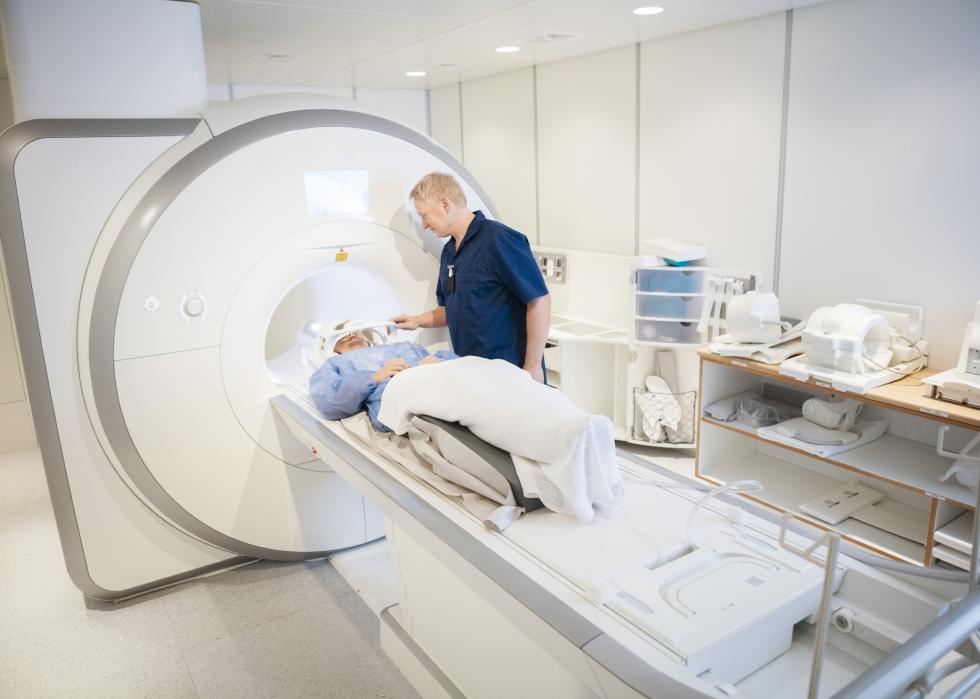
#29. Diagnostic medical imaging
- Percent of graduates with high meaning careers: 80%
- Mid-career median pay: $60,600
- Early career median pay: $46,800
Graduating with a diagnostic medical imaging degree requires passing courses including image production and value, patient care and procedures, radiation safety, and clinical education. Working in the field entails preparing patients for imaging procedures, operating diagnostic equipment, examining images, and maintaining patient records.
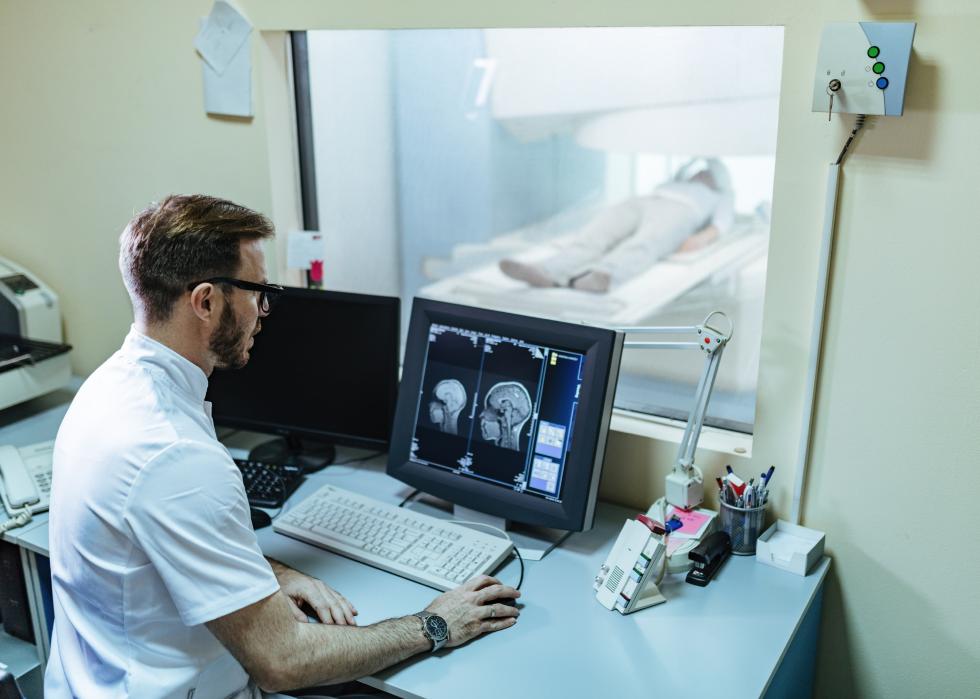
#28. Radiology
- Percent of graduates with high meaning careers: 80%
- Mid-career median pay: $66,300
- Early career median pay: $48,100
Primary pathways after completing a radiology degree include sonography, nuclear medicine technology, magnetic resonance imaging (MRI), radiation therapy, and radiography. Graduates must complete rigorous courses like biochemistry, pathophysiology, diagnostic concepts, and radiographic protection to practice in the field.
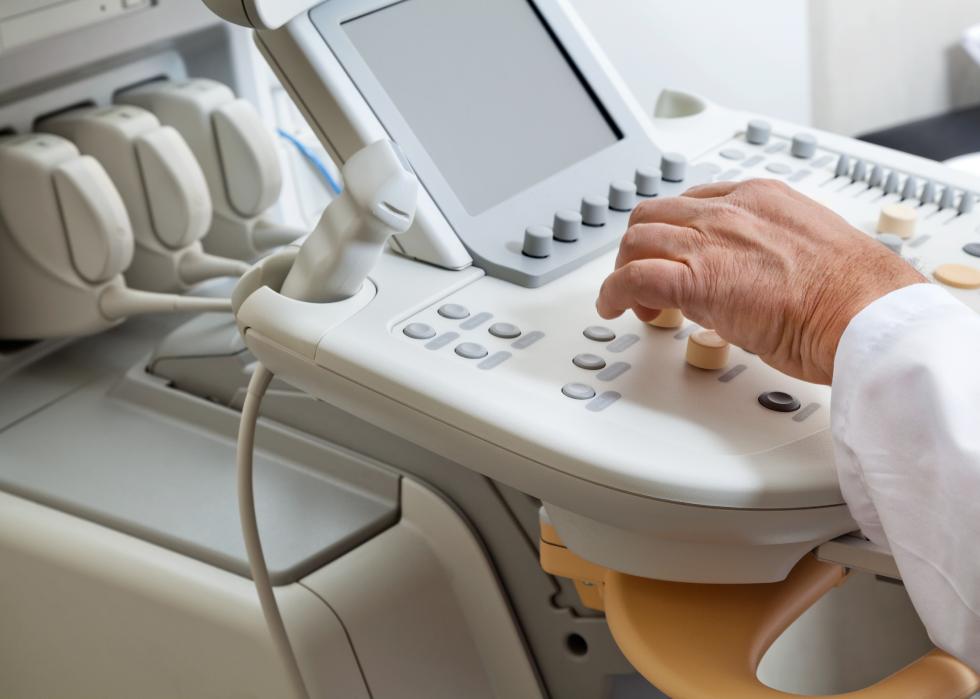
#27. Biomedical equipment technology
- Percent of graduates with high meaning careers: 80%
- Mid-career median pay: $67,200
- Early career median pay: $45,200
A biomedical equipment technology degree leads to many positions, including medical sales, technician, and trainer for medical staff. The degree is highly technical, requiring knowledge of solid-state electronics, computer repair, biomedical equipment instruction, medical terminology, and algebra. Troubleshooting, performing preventative maintenance, and repairing medical equipment are key tasks for biomedical equipment technicians.

#26. Environmental health & safety
- Percent of graduates with high meaning careers: 80%
- Mid-career median pay: $70,900
- Early career median pay: $46,100
Food inspectors and corporate health and safety specialists are two jobs available to those with an environmental health and safety degree. Enforcing federal and state regulations, examining potential hazards, and preventing injuries are all in a day's work to graduate with the degree. While a two-year degree offers the opportunity to earn a median salary immediately, there are job risks and unavoidable danger in the profession.

#25. Medical laboratory science
- Percent of graduates with high meaning careers: 81%
- Mid-career median pay: $51,600
- Early career median pay: $38,500
Medical laboratory scientists (MLS) or technicians learn the trade by hands-on clinical experience and daily lab sessions, to learn how to perform scientific tests and report data and results to doctors. The Mayo Clinic estimates “60-70% of all decisions regarding a patient's diagnosis, treatment, hospital admission, and discharge are based on the results performed by medical laboratory scientists," making the role vital in health care.

#24. Allied health
- Percent of graduates with high meaning careers: 81%
- Mid-career median pay: $52,400
- Early career median pay: $37,600
An allied health degree is a broad program that encompasses dozens of jobs in multiple health care settings. Some notable allied health professions include health information technologists, nutritionists and dietitians, and physical, occupational, and speech therapists. The general health degree program educates students in human sciences and social/behavioral topics, and other subjects tailored to each major.
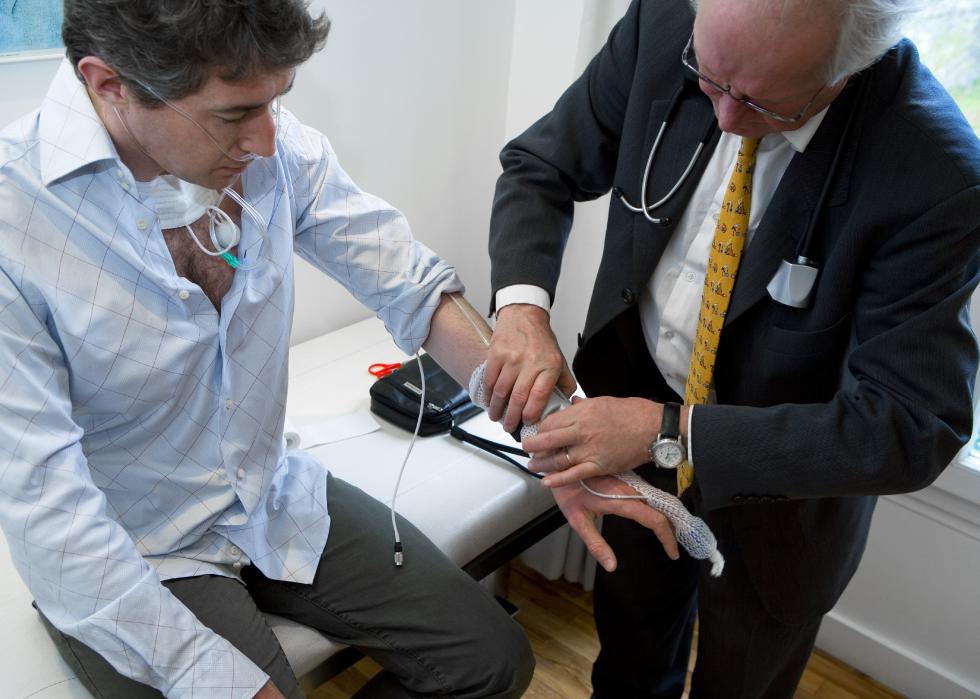
#23. Polysomnography
- Percent of graduates with high meaning careers: 81%
- Mid-career median pay: $54,200
- Early career median pay: $48,200
To conduct sleep studies, a technician must have a degree in polysomnography. Working with patients who suffer from sleep disorders, a polysomnographist performs diagnostic brain wave and function tests, completes evaluations, and assists doctors in analyzing and diagnosing specific disorders. Graduates must maintain current CPR and BLS certifications to practice.

#22. Radiologic science
- Percent of graduates with high meaning careers: 81%
- Mid-career median pay: $64,600
- Early career median pay: $52,900
Learning to capture the most accurate 2D and 3D images with diagnostic equipment is the main focus of radiologic science. The field offers three employment levels, with an associate's degree falling in between a certification and a bachelor's degree. Programs focus on limited scope X-ray, magnetic resonance imaging technology, nuclear medicine technology, sonography/ultrasound, or radiotherapy.
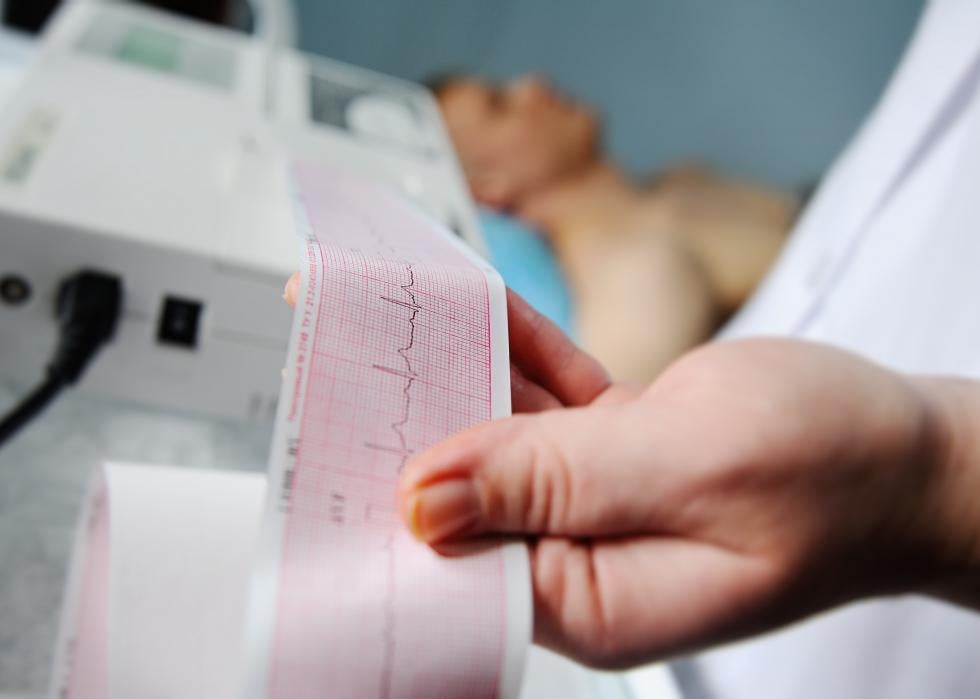
#21. Echocardiography
- Percent of graduates with high meaning careers: 81%
- Mid-career median pay: $74,100
- Early career median pay: $57,800
Echocardiography is the study of the heart through sonographic imaging. Technicians in the field are part of a team, working closely with cardiologists. Along with learning how to use electrocardiogram equipment to perform exams, graduates take courses in elementary physics, ultrasound and Doppler physics, and applications and vascular technology. Graduates must also be skilled in therapeutic communication, which is essential when administering exams.

#20. Respiratory therapy
- Percent of graduates with high meaning careers: 82%
- Mid-career median pay: $63,000
- Early career median pay: $48,200
Respiratory therapists assist patients in regaining normal breathing by administering specific techniques. Most graduates go on to work in critical care and emergency hospital units or nursing homes. All graduates must pass the Certified Respiratory Therapist (CRT) exam to practice in the field.

#19. Respiratory care
- Percent of graduates with high meaning careers: 82%
- Mid-career median pay: $63,100
- Early career median pay: $50,000
Similar to respiratory therapy, graduates with a respiratory care degree work with patients who have difficulty breathing. Program courses include critical care techniques, cardiopulmonary diseases, emergency care, and cardiac anatomy and physiology. Respiratory care graduates must pass the National Board for Respiratory Care exam to practice in the field.
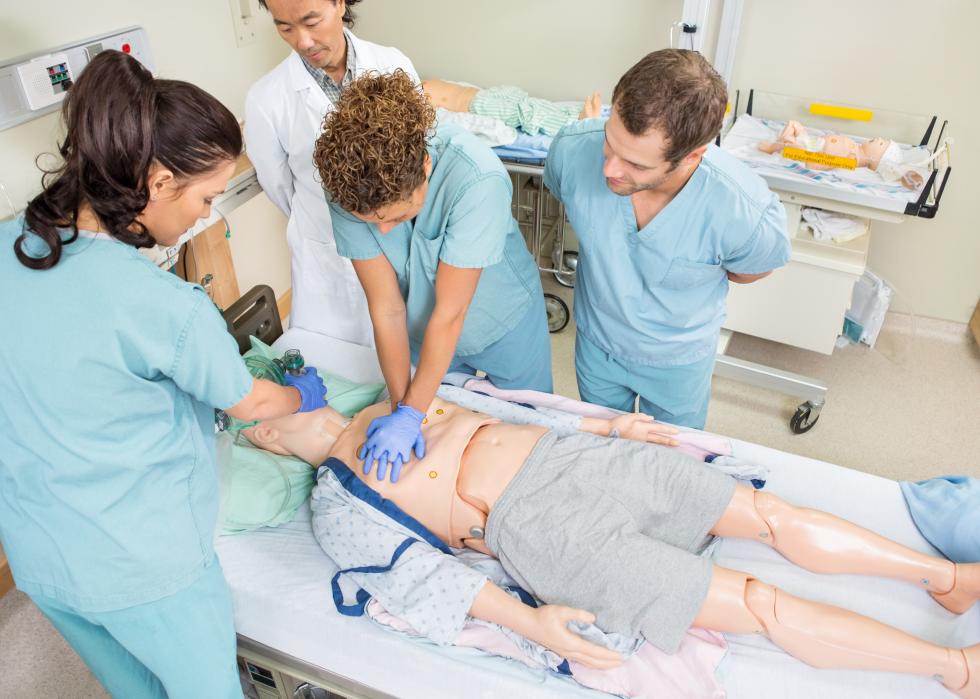
#18. Nursing education
- Percent of graduates with high meaning careers: 82%
- Mid-career median pay: $70,800
- Early career median pay: $56,000
Nurses are one of the most in-demand jobs in the health care industry, and finding qualified people to teach those nurses is equally in demand. Graduates with a degree in nursing education can teach in either a classroom or clinical setting, and can earn as much as their Registered Nurse counterparts.

#17. Associate degree in nursing
- Percent of graduates with high meaning careers: 82%
- Mid-career median pay: $71,600
- Early career median pay: $57,600
Obtaining an associate degree in nursing (ADN) and passing the NCLEX-RN exam is the quickest path to becoming a registered nurse (RN). Microbiology, pharmacology, and behavioral health are a few of the courses students will undertake during their studies. Earning additional certifications and work experience can help increase a nurse’s salary quickly.

#16. Nursing science
- Percent of graduates with high meaning careers: 82%
- Mid-career median pay: $74,100
- Early career median pay: $57,800
An associate of science degree in nursing (ASN) is one of three pathways to becoming a physician's assistant and can be studied at a vocational school or hospital-based program. Along with mandated courses, including medical-surgical nursing, health assessment, and pharmacology, graduates also review for the National Council Licensure Examination that must be passed to practice in the field.
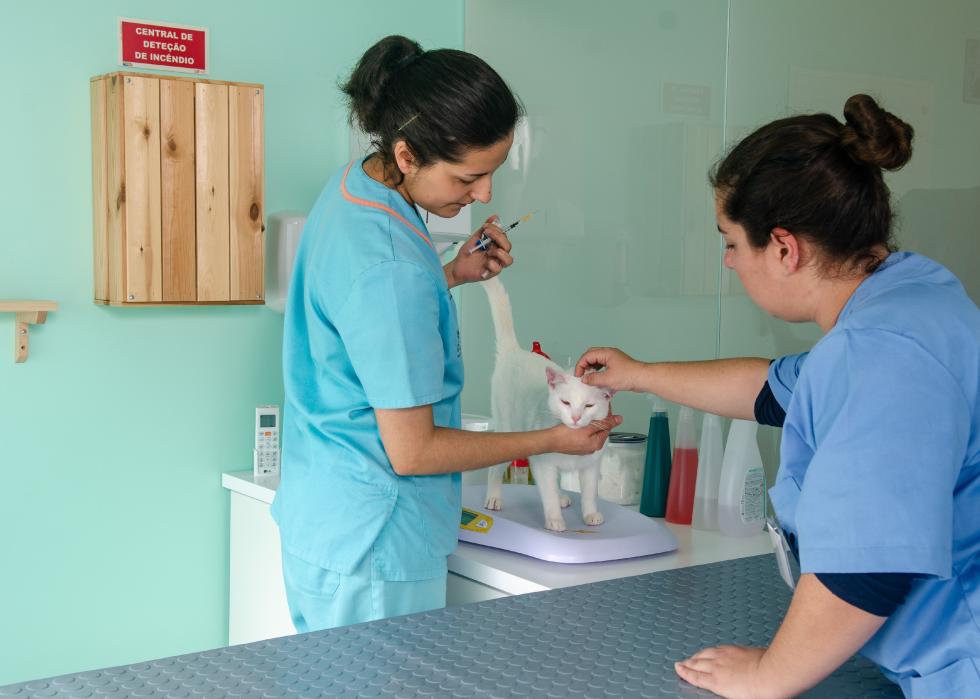
#15. Veterinary technology
- Percent of graduates with high meaning careers: 83%
- Mid-career median pay: $41,000
- Early career median pay: $30,600
While becoming a veterinary technologist requires a bachelor’s degree, two years of study in the field can open grads to a career as a veterinary technician. Vet techs lend support to veterinarians by taking information from patients, and giving medication and treatment. Prospective vet techs must complete certification through the American Veterinary Medicine Association Committee on Veterinary Technician Education and Activities.

#14. Business & health care management
- Percent of graduates with high meaning careers: 83%
- Mid-career median pay: $47,900
- Early career median pay: $35,200
An associate’s degree in business and health care management opens graduates to work on the business end of the health care industry. Students will learn staff management, budgeting, and basic patient care, and can work in a variety of health care environments, from hospitals and private facilities, to governments and insurance companies.

#13. Health care
- Percent of graduates with high meaning careers: 84%
- Mid-career median pay: $51,500
- Early career median pay: $35,600
Obtaining a degree in health care sets the stage for a variety of career options, from pharmacy tech to medical assistant. The aging baby boomer population will keep professions in the field growing rapidly over the next decade.
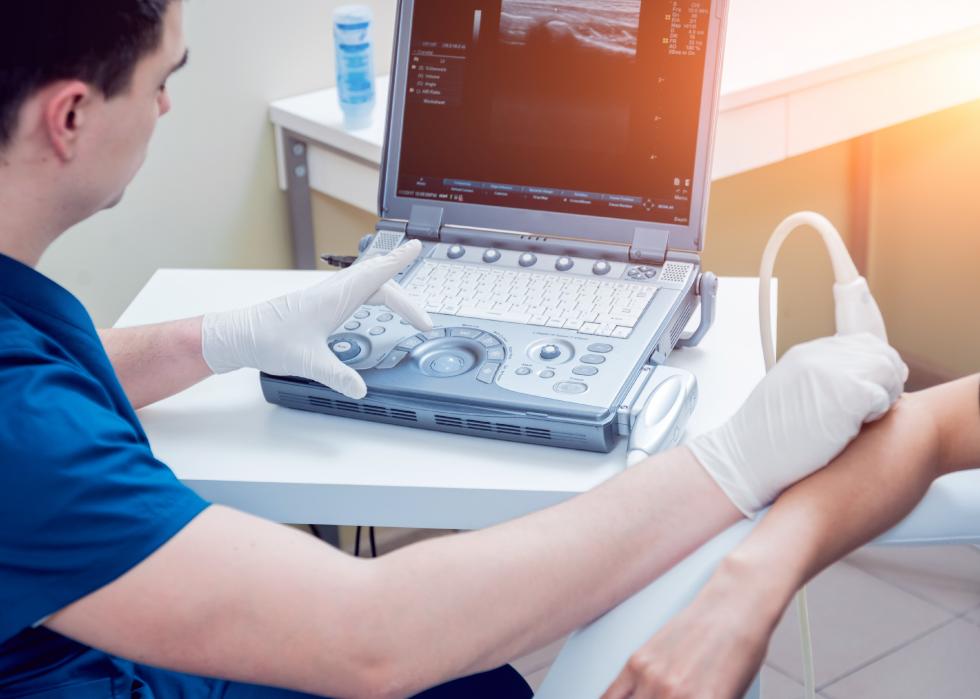
#12. Diagnostic medical sonography
- Percent of graduates with high meaning careers: 84%
- Mid-career median pay: $72,700
- Early career median pay: $58,100
Graduates with an associate’s degree in diagnostic medical sonography work with patients in the early stages of diagnoses. The images these professionals capture through ultrasounds help set the stage for a doctor’s treatment plan. Along with the satisfaction of helping patients on a daily basis, a career in sonography comes with a mid-career pay above $72,000.

#11. Nuclear medicine
- Percent of graduates with high meaning careers: 84%
- Mid-career median pay: $77,300
- Early career median pay: $62,600
A career using radiopharmaceuticals to treat a wide range of illnesses and diseases can be attained by earning an associate's in nuclear medicine. Performing renal, bone, breast, heart, and thyroid scans by injecting a small amount of radioactive material requires extensive coursework in chemistry, biology, and other sciences.

#10. Surgical technology
- Percent of graduates with high meaning careers: 85%
- Mid-career median pay: $52,700
- Early career median pay: $39,700
Surgical techs assist doctors and nurses in the operating room by sterilizing equipment, passing surgical instruments, and providing wound care. An associate’s degree, though not necessary, along with non-mandatory certifications, increase employment opportunities for these grads. Students will learn about sterilization techniques and wound care, and receive hands-on training in a clinical environment, along with studies in biology, anatomy, and physiology.

#9. Physical therapist assistant studies
- Percent of graduates with high meaning careers: 85%
- Mid-career median pay: $62,000
- Early career median pay: $49,900
Physical therapist assistant studies graduates help licensed PTs improve the lives of their patients. Coursework in anatomy, biology, chemistry are just a few of the prerequisites, while hands-on training and licensing are required to find work.

#8. Physical therapy
- Percent of graduates with high meaning careers: 85%
- Mid-career median pay: $64,400
- Early career median pay: $48,800
Helping patients recover from major injuries as a physical therapy assistant requires training in human anatomy, kinesiology, biology, and chemistry. Graduates must also gain certification through the National Physical Therapy Exam. Similar to physical therapist assistant studies, physical therapy grads often continue their education.
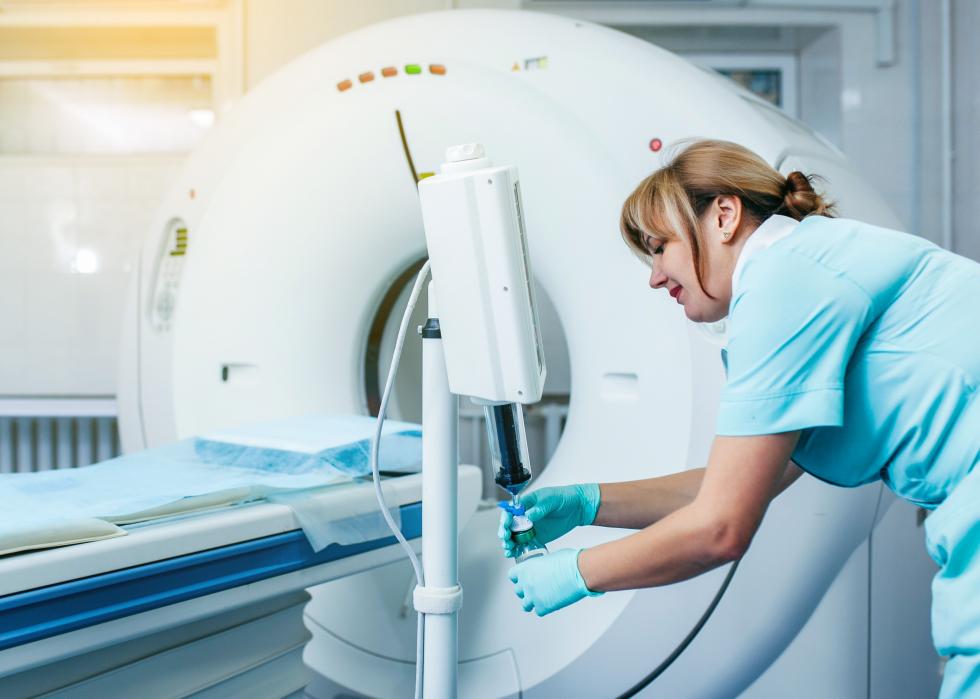
#7. Nuclear medicine technology
- Percent of graduates with high meaning careers: 85%
- Mid-career median pay: $76,100
- Early career median pay: $60,700
Helping doctors by performing tests and administering radioactive medications to patients falls to nuclear medicine technologists. Courses in sciences and math, as well as lab work and an internship, are required to obtain employment. An associate in the field also prepares grads to be on the front lines in the event of a nuclear attack.

#6. Special education
- Percent of graduates with high meaning careers: 86%
- Mid-career median pay: $39,100
- Early career median pay: $27,600
Graduates earning an associate's in special education aid teachers in working with children with developmental disabilities. Additional certifications are required, as are courses aimed at dealing with speech, behavioral, and physical disabilities.

#5. Occupational therapy assistant (OTA) studies
- Percent of graduates with high meaning careers: 86%
- Mid-career median pay: $63,300
- Early career median pay: $53,500
The field of occupational therapy is expected to grow rapidly in the next decade, as the Baby Boomer population ages. A graduate in OTA studies will be prepared to assist patients in daily life activities, including stretching and eating, and lead children with disabilities in play activities. Courses needed include biology, kinesiology, and field training, while all states require certification upon graduation.

#4. Cardiovascular technology
- Percent of graduates with high meaning careers: 90%
- Mid-career median pay: $72,900
- Early career median pay: $56,800
Graduates with an associate’s in cardiovascular technology will learn the ins and outs of the human heart. Their work entails implanting stents or pacemakers, and performing a number of tests to diagnose heart disease and other ailments. One year of specialized instruction is required, as well as certification upon graduation.
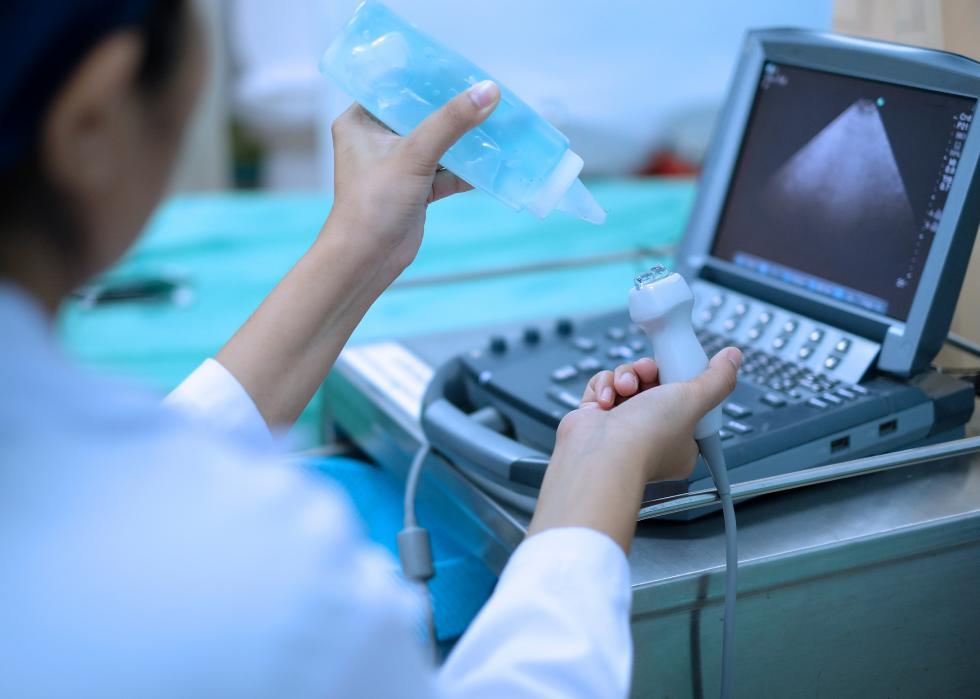
#3. Diagnostic medical ultrasound
- Percent of graduates with high meaning careers: 91%
- Mid-career median pay: $77,300
- Early career median pay: $53,300
Diagnostic medical sonographers have highly technical medical skills, learned through a variety of courses in math, science, and anatomy. A good sonographer also needs interpersonal skills, as they are among the first to deal with a patient on the road to a diagnosis. Graduates can choose to specialize in an area, like obstetrics, vascular technology, or echocardiography.
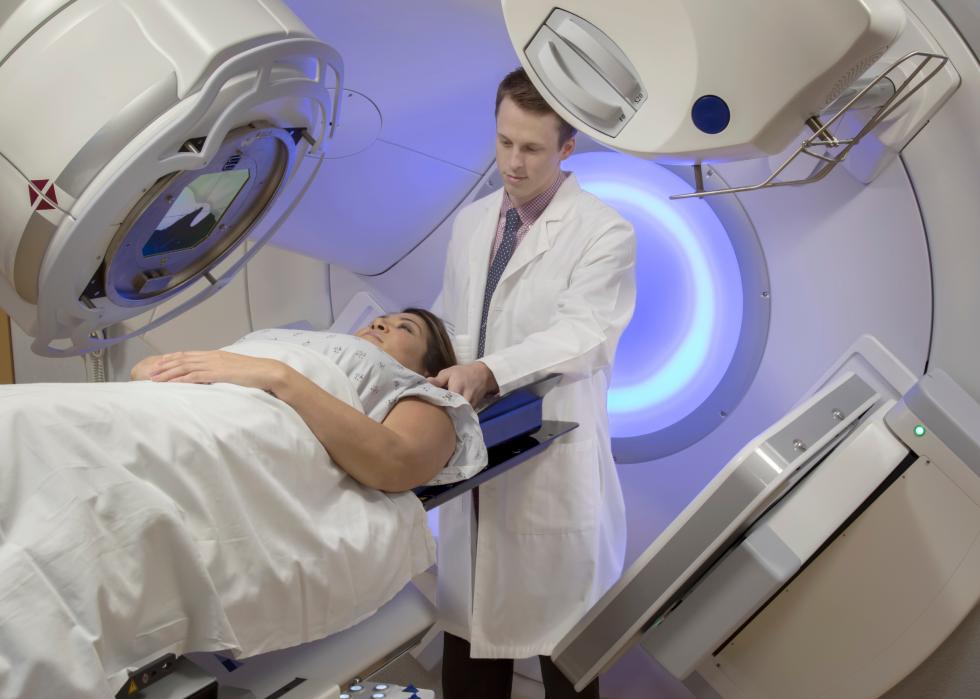
#2. Radiation therapy
- Percent of graduates with high meaning careers: 91%
- Mid-career median pay: $92,600
- Early career median pay: $62,300
Along with the prospect of curing cancer, a two-year degree in radiation therapy provides the highest early and mid-career pay on the list. Radiation therapists work as part of a team, operating machinery, monitoring patients, and keeping records. Courses in math, science, and human anatomy are required, along with passing national and state exams, before a graduate can work in the field.

#1. Alcohol & drug studies
- Percent of graduates with high meaning careers: 93%
- Mid-career median pay: $48,400
- Early career median pay: $35,700
Helping people recover from the throes of alcohol and drug dependency proves very rewarding for graduates of two-year alcohol and drug studies programs. Though requirements vary from state to state, graduates with this degree must complete up to two-years of full-time supervision to become a Certified Addiction Counselor. Classes teach students how to deal with crisis intervention, ethics issues, and counseling.



